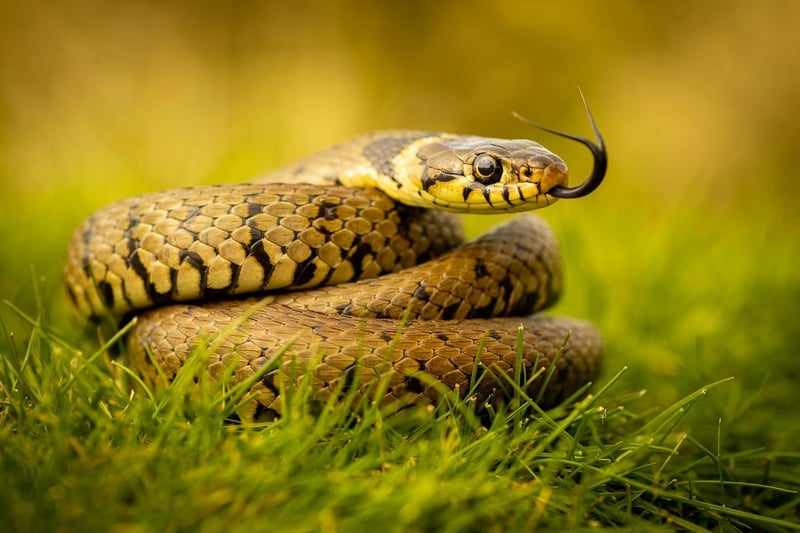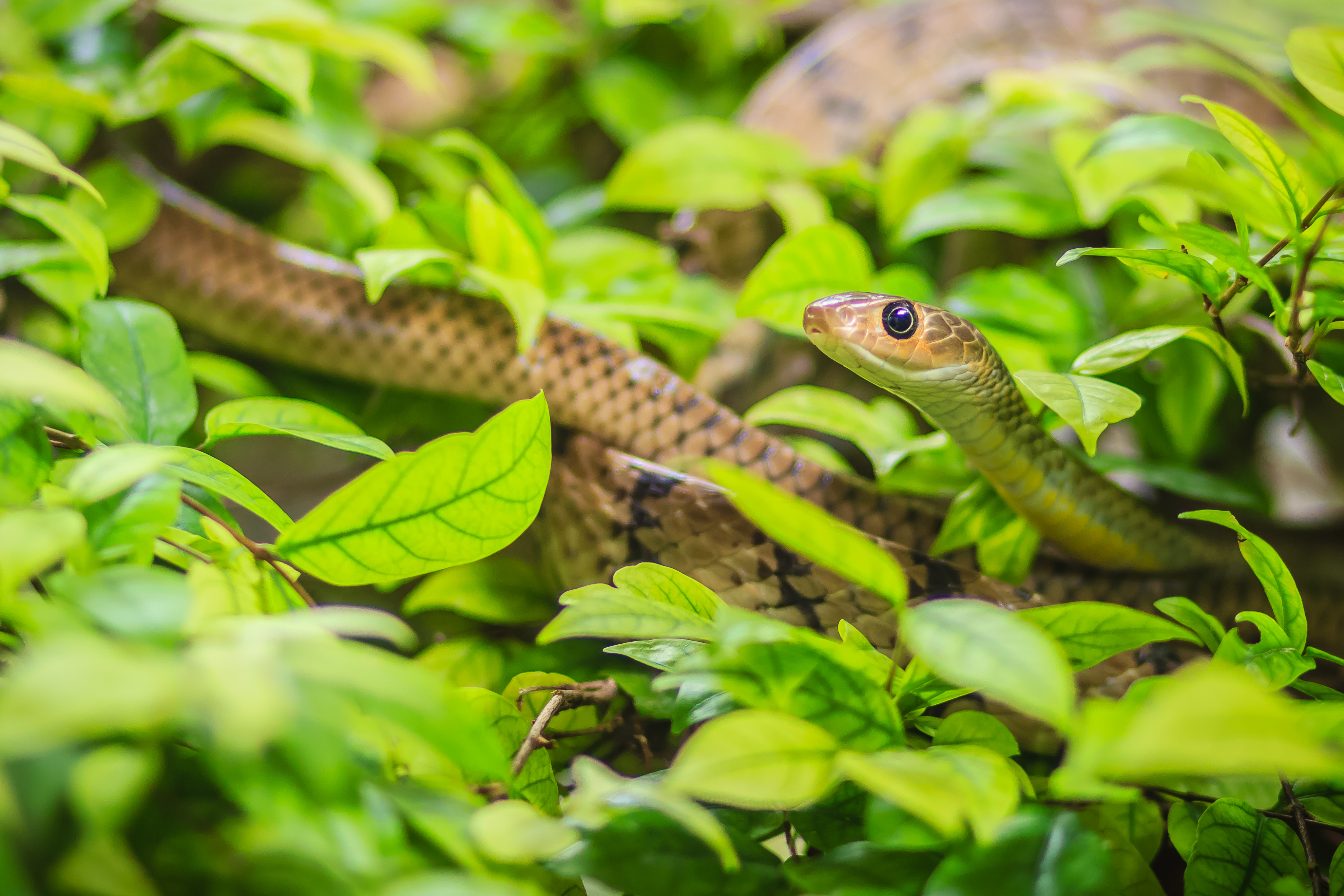
Embark on a journey with us as we peel back the layers of myths and misconceptions surrounding these enigmatic creatures.
Snakes, the mystical beings that slither through the wilderness, have long been entangled in fear and superstition. For many, the mere thought of snakes conjures ancient fears etched deep into our collective psyche. But what if we told you that much of what you've heard about these intriguing creatures is nothing more than myths and misconceptions?
Let's rewrite the narrative and forge a deeper connection with these often-misunderstood beings.
1. Myth: All snakes are venomous
Only a small fraction of all snake species is venomous, and an even smaller percentage of those snakes can kill or critically wound a human.
In Canada, there are 25 known snake species and only a couple of them are venomous. Most snakes are harmless and play crucial roles in ecosystems. Snakes are mesopredators – they play both predator and prey roles which is integral to maintaining a healthy balance in the ecosystem.
2. Myth: Snakes are aggressive and are out to get you
Snakes are not naturally aggressive toward humans. In fact, they much prefer to avoid confrontation and will strike only when they feel threatened.
In Canada, snake bites in the wild are extremely rare, and when bites do occur, it’s most often in a defensive manner, for example, after being accidentally stepped on.
3. Myth: Snakes chase people
Snakes do not chase humans. The concept of relentless pursuit echoes tales from folklore, where serpents were often portrayed as cunning tricksters. They may appear to be pursuing you, but they are usually just heading in the same direction.
According to herpetologists (those who study reptiles and amphibians), snakes don’t give chase, but rather their instinct is to flee.
Fear of snakes: an evolutionary perspective
Why do humans instinctively harbor fear toward snakes? Our innate fear of snakes can be traced back to our evolutionary history. Much like in folklore, where creatures resembling snakes or serpents, such as the formidable Medusa from Greek mythology, with her snake-hair and serpent-like body, could turn people into stone with a single gaze. Or the snake from the story of the Garden of Eden, which has been interpreted as evil or temptation. Our ancestors' survival depended on fearing snake-like creatures.
Snakes occupy a unique space in our stories and myths, embodying both omens of doom and symbols of rejuvenation and transformation. This duality mirrors the complex relationship humanity has with these enigmatic reptiles.
Yet, our deeply ingrained fear has cast a long shadow, fostering misunderstandings and unjust persecution of snakes. It’s essential to acknowledge that fear, while a natural response, can be tempered through knowledge and understanding.
 Photo: Christopher PB / Shutterstock
Photo: Christopher PB / Shutterstock
Impact on conservation
The repercussions of our deeply ingrained fear of snakes ripple far beyond individual experiences. They exert a profound influence on how we perceive and care for these creatures, affecting conservation efforts.
In many cultures, snakes are revered as symbols of protection and renewal, much like the revered Rainbow Serpent in Australian Aboriginal beliefs, which shapes landscapes and waterways. In contrast, actions driven by fear and sustained myths have led to the destruction of snake habitats and the widespread killing of these mysterious creatures.
For example, the pervasive fear of venomous snakebites in southern Nepal has led to negative attitudes towards snakes, resulting in the killing of snakes. This has tragically led to the unwarranted killing of these creatures. Such actions aimed at reducing snake populations not only heighten the risks of snakebites but also jeopardize the region's biodiversity. When our understanding of snakes remains shrouded in myths, we tend to make decisions tainted by preconceived notions.
Sadly, these prevalent misconceptions have further limited our knowledge of snakes compared to other animals. This knowledge gap is gradually closing, revealing that snakes are sentient, intricate beings capable of experiencing a wide range of emotions. They thrive in complex ecosystems where they hold a pivotal role.
By actively confronting our fears and embracing these remarkable creatures, we can deepen our understanding of their vital role in ecological balance. This enlightenment, in turn, paves the way for more effective conservation strategies, safeguarding both snakes and the environments they inhabit.
The importance of education
Education is the key to dispelling myths and conquering fear. By educating ourselves and sharing our knowledge, we can help change the narrative surrounding snakes. The more we learn, the less we fear.
🐍
So today on World Reptile Awareness Day (October 21st), let's make an effort to appreciate the beauty and importance of snakes in our world. By doing so, we can help dispel myths, protect these fascinating reptiles, and develop a healthier relationship with them.
Learn more about snakes:
Banner: Marc Freebrey / Shutterstock
